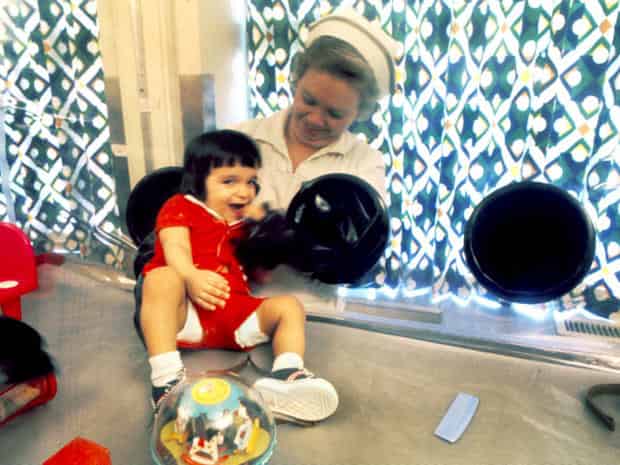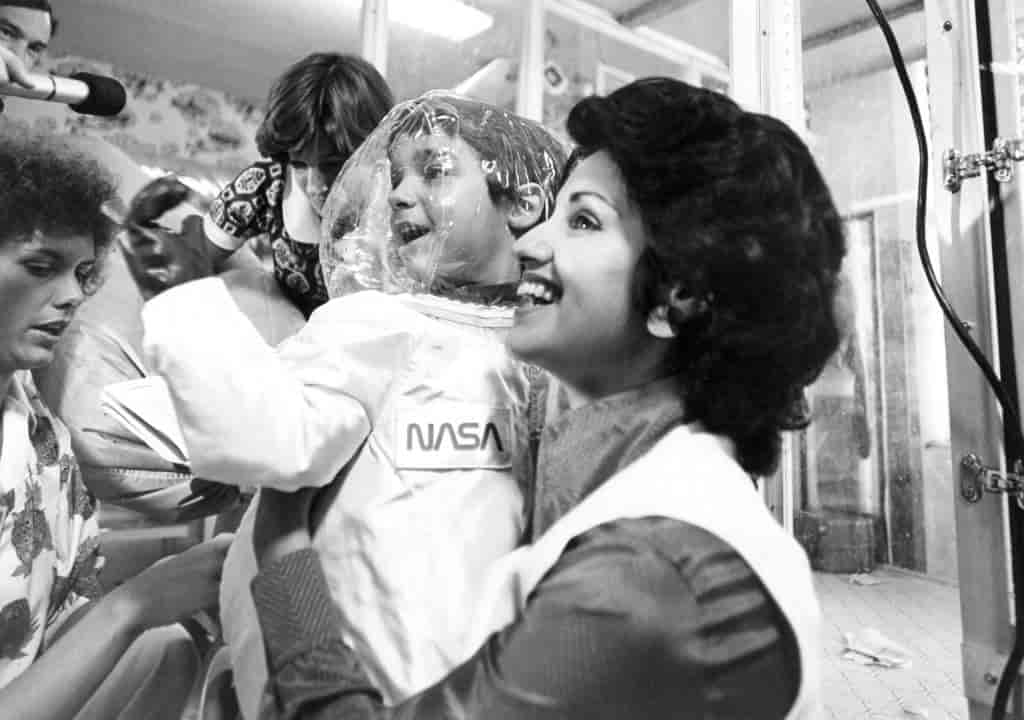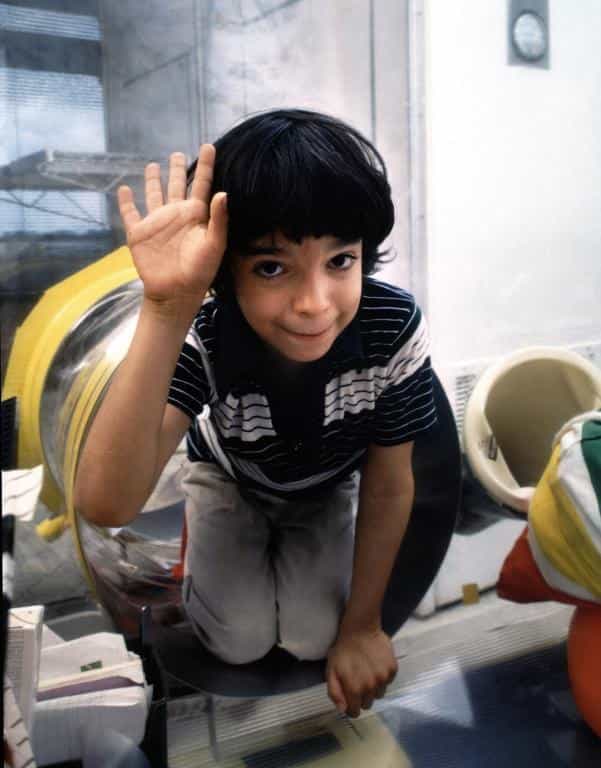David Phillip Vetter, the boy who lived in a bubble

David Phillip Vetter, born on September 21, 1971, in Houston, Texas, captured the attention of the world as the “Bubble Boy” due to his rare medical condition, severe combined immunodeficiency (SCID). His story, filled with hope, innovation, and heartbreak, highlights the complex relationship between medical advancements and the human experience.
Early Life and Diagnosis
David was born into a family with a genetic predisposition to SCID, a condition in which the body’s immune system is severely weakened, making the individual highly susceptible to infections. SCID was a death sentence in the early 1970s. David’s older brother, who also had SCID, tragically passed away at just seven months old. Knowing that David had a 50% chance of inheriting the condition, doctors and his family were prepared for drastic measures to keep him alive.

Within seconds of his birth, David was placed in a sterile, plastic isolation chamber, an airtight bubble designed to shield him from harmful pathogens. This space would become his home, school, and playground for most of his life.

Life Inside the Bubble
David’s life was dominated by the bubble’s sterile environment. His medical team at Texas Children’s Hospital, alongside NASA engineers, designed a special suit that allowed David to leave his bubble for brief moments. However, even with these innovations, David’s world remained largely confined. He couldn’t physically touch other people, including his family, without the barrier of the bubble.
Despite his confinement, David was an intelligent, curious, and playful child. He was educated within his bubble, and his mental development was supported through lessons and social interaction with his family and medical staff.
The media portrayed David’s life as a scientific wonder, but it also drew attention to the ethical and emotional toll on both David and his family. As David grew older, the psychological effects of his isolation began to weigh heavily on him, leading to deeper philosophical questions about the nature of life and the limits of medical intervention.
Medical Advancements and Struggles
Over the years, the medical community sought a cure for David’s SCID. Bone marrow transplants, which were still experimental, were considered his best chance for survival. In 1983, after years of waiting, a match was found—his sister, Katherine. The transplant was hoped to stimulate his immune system, but tragically, it introduced the Epstein-Barr virus into his system.
Without a functioning immune system to fight the virus, David fell gravely ill. His condition deteriorated rapidly, and for the first time in his life, he left the isolation of the bubble to receive medical care directly. He died on February 22, 1984, at the age of 12.
David Vetter’s Cause of Death
David Phillip Vetter’s cause of death was complications from lymphoma, triggered by the Epstein-Barr virus. The virus had unknowingly been present in his sister’s bone marrow, which was transferred during the transplant. His already weakened immune system was unable to combat the infection, leading to his tragic death.
Legacy and Impact on Medical Science
David Vetter’s short life had a profound impact on medical science, particularly in the field of immunology and genetics. His case brought attention to the importance of early diagnosis and treatment for SCID, which led to advancements in newborn screening and gene therapy. Today, SCID can often be treated with bone marrow transplants if detected early, vastly improving survival rates.
His story also raised important ethical questions about medical intervention and the quality of life. Though David’s life was filled with many challenges, his courage, and the dedication of his family and medical team, left an enduring legacy in both the medical community and public consciousness.
David Phillip Vetter’s life is a testament to the resilience of the human spirit in the face of overwhelming adversity. While medical technology can extend life, David’s story reminds us of the emotional and psychological costs that can accompany such advances. His legacy continues to inspire advancements in the treatment of immunodeficiencies and challenges us to consider the balance between life-saving treatments and quality of life.
Frequently Asked Questions (FAQ) About David Phillip Vetter
1. Who was David Phillip Vetter?
David Phillip Vetter, commonly known as the “Bubble Boy,” was a boy born with severe combined immunodeficiency (SCID), a rare genetic disorder that left him without a functioning immune system. He lived most of his life in a sterile isolation chamber to protect him from infections.
2. What is SCID?
Severe combined immunodeficiency (SCID) is a rare genetic disorder in which a child is born without an effective immune system. Without treatment, even a mild infection can be fatal.
3. Why did David Vetter live in a bubble?
David was placed in a sterile isolation bubble immediately after birth to prevent exposure to germs and bacteria, as his body could not fight off infections due to SCID.
4. How long did David Vetter live in the bubble?
David lived in the isolation bubble for almost his entire life, from birth in 1971 until his death in 1984, a period of nearly 12 years.
5. How did David leave the bubble?
Although confined to the bubble, David briefly experienced the outside world through a specially designed spacesuit created by NASA engineers. However, he was unable to leave the bubble for extended periods.
6. What was David Vetter’s cause of death?
David Vetter died due to complications from lymphoma, caused by the Epstein-Barr virus introduced during a bone marrow transplant from his sister. His weakened immune system was unable to combat the infection, which ultimately led to his death.
7. What was the purpose of David’s bone marrow transplant?
The bone marrow transplant was an attempt to treat his SCID by giving him a functioning immune system. Unfortunately, the transplant carried the Epstein-Barr virus, which led to his fatal illness.
8. What advancements in SCID treatment came from David Vetter’s case?
David’s case brought significant awareness to SCID and helped drive advancements in genetic screening and bone marrow transplant techniques. Today, early diagnosis of SCID is possible through newborn screening, and many patients with SCID can receive life-saving treatment.
9. What ethical questions did David Vetter’s case raise?
David’s life in isolation prompted debates about the balance between extending life through medical intervention and maintaining quality of life. The emotional and psychological impact of his isolation highlighted the importance of considering patients’ overall well-being.
10. How is SCID treated today?
Today, SCID is often treated with bone marrow transplants or gene therapy if detected early, offering patients a much higher chance of survival. Newborn screening programs help identify the condition soon after birth, leading to timely intervention.
11. What is David Vetter’s legacy?
David’s life and story brought attention to SCID and contributed to advancements in immunology and genetics. His case also inspired discussions about medical ethics and has been a catalyst for significant progress in treating immune system disorders.
